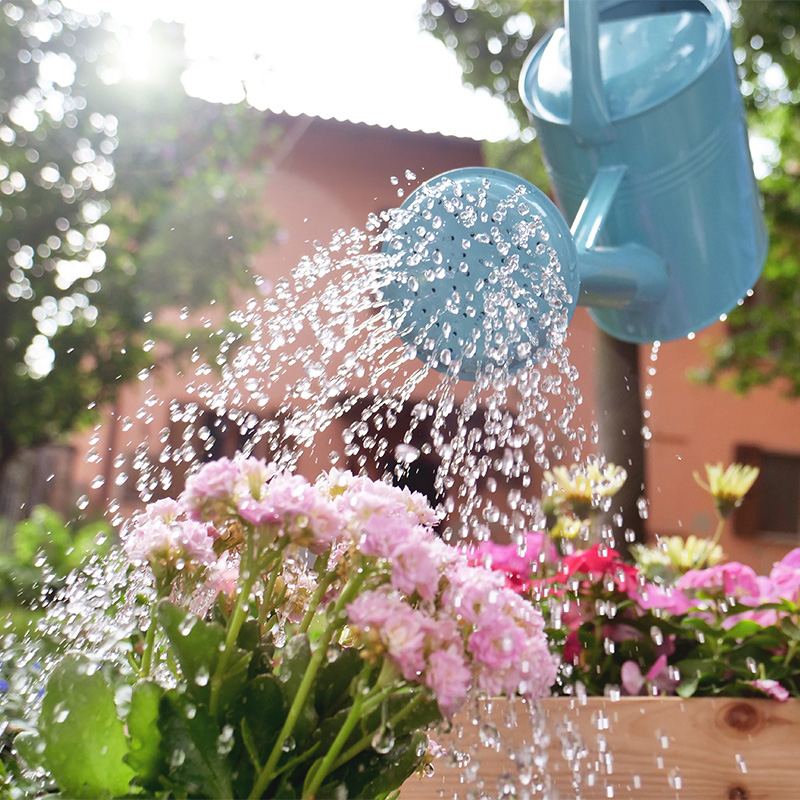Planting Summer Flowering Bulbs
Summer is right around the corner, and now is the best time to prep your garden with vibrant colours. In this blog you will find all you need to know about planting some of the most popular summer bulbs, Dahlias, Lilies and Begonias.
Don’t worry if your garden is small, some of the most stunning varieties can be found in pots or containers. Whether you’re a hardened grower or a complete beginner, find all the necessary tools and guidance to start your summer borders off correctly right here!
Dahlias
Dahlias are best known for their huge, ruffled pom-pom like flowers in a wide variety of colours and are often chosen as cuttings. They love being in a warm sunny spot with shelter from harsh winds. Dahlias are perennials, though they are not hardy. They will grow back each year; however, you will need to shelter them with a horticultural fleece or take them inside when a harsh frost rolls around.
Try to avoid planting yours in shade or consistently boggy areas, Dahlias dislike being overly wet as well as overly dry. Some varieties with multiple large flowers can become top heavy (especially after rain) and so may require staking for upright support.
You can plant some of the more compact and dwarf varieties in containers. These are excellent for people with smaller gardens to really enjoy their unique flowers. Otherwise plant them in well-draining soil with protection from frosty winds.
Some of the best Dahlia displays come from the mixed selections. You can find often find premixed seed packets for a variety of colours in your local British Garden Centre or browse the available range Online.
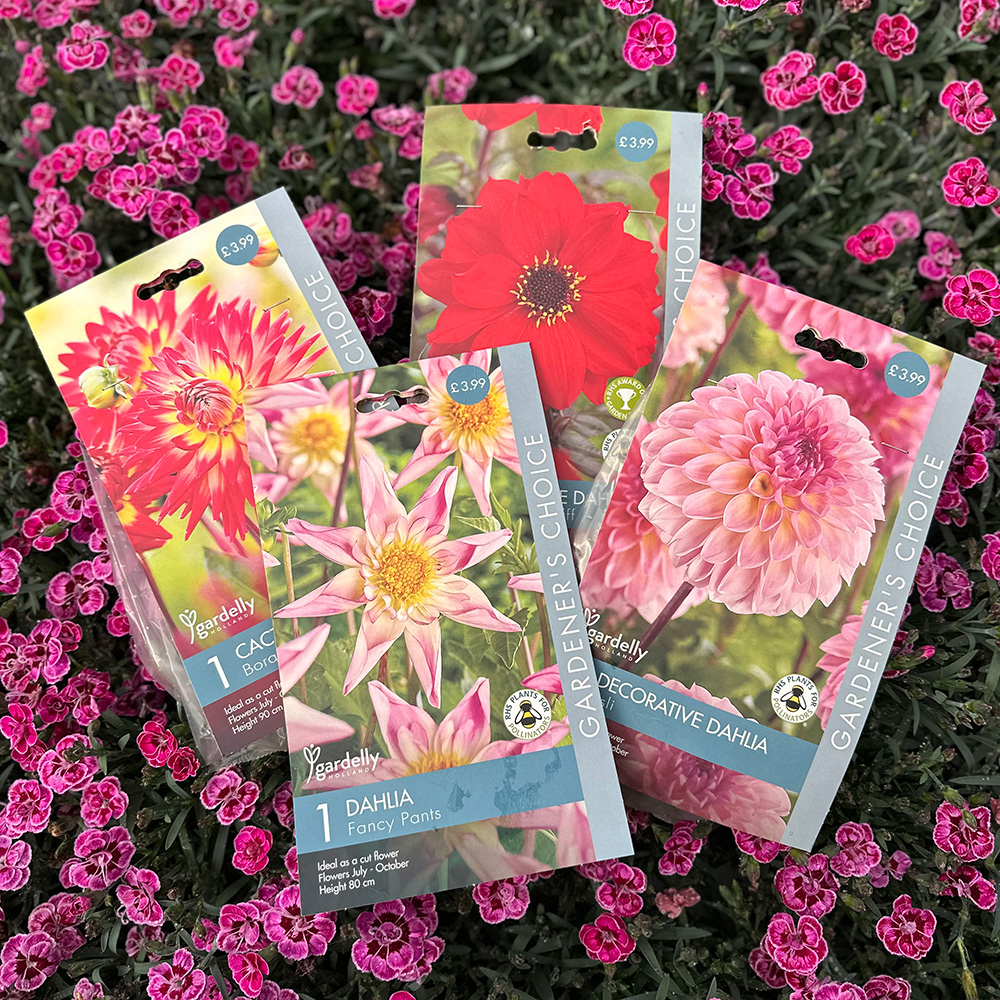
Caring for Dahlias
It’s important to know what you’re getting into before planting. Dahlias are such vigorous growers and will need feed to really flourish. They will need some additional feeding throughout their growing season and plenty of water in the summer months – especially ones planted in containers as these will dry out much quicker.
A good practice to get into is “deadheading”. This is simply cutting back spent flowers to stop the plant from producing seeds and instead produce more flowers. This will keep your gardens in bloom much longer.
“Pinching” a growing tuber can greatly boost its growth later by encouraging more flowers and bushier foliage. Once your Dahlia is around 30cm out of the ground, pinch out the top growth on the central stem of the plant. This will greatly boost its growth for thicker foliage and bloom more flowers.
Though do beware, you may find your summer border quickly overcrowded by these intense growers. It’s best to monitor your Dahlias growth and remove any overly excessive stems to keep them neat, tidy and unintrusive.
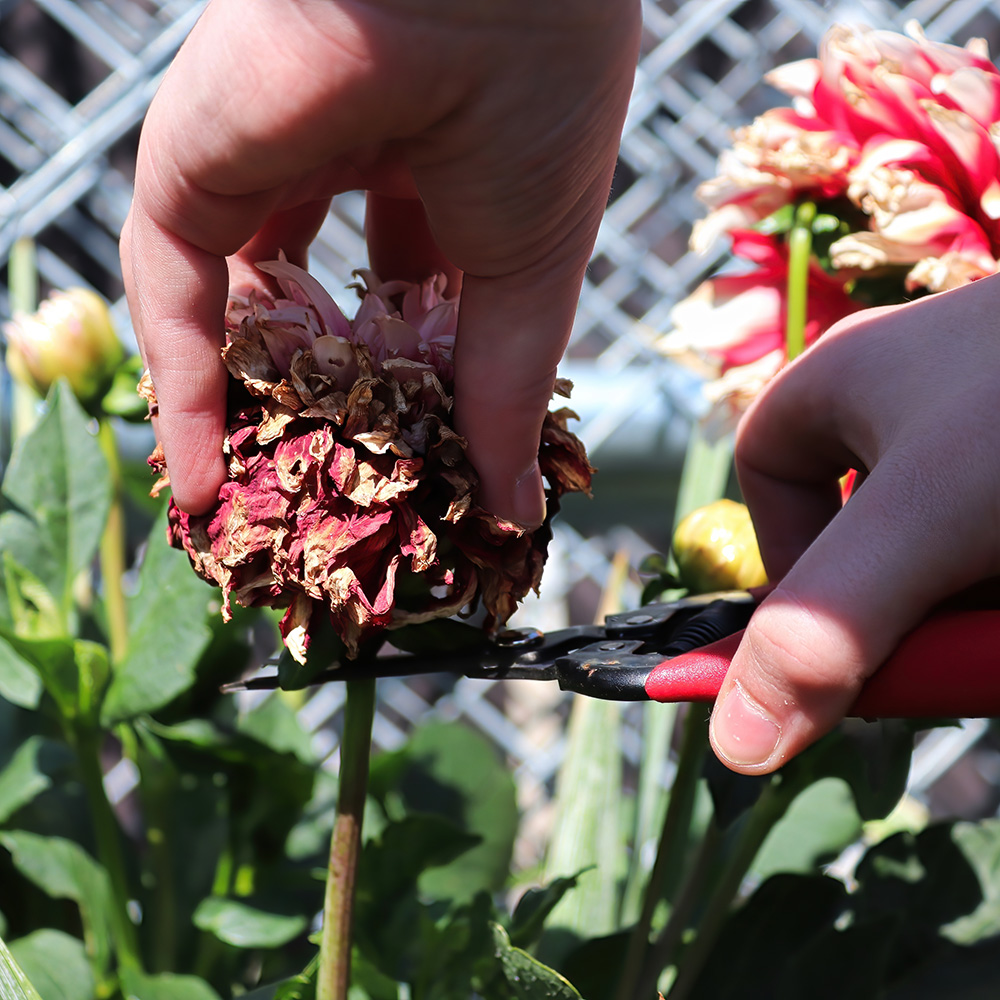
Lilies
Lilies produce huge flowers in a beautiful array of colours, ranging from solid whites and freckled petals to vivid, multi-coloured heads. They make for fantastic cuttings thanks to their unmistakable fragrance. They can thrive in sunlight or dappled shade and even some containers. Often considered quite easy to grow, these rather hardy perennials will need minimal aftercare.
You will find many different classifications of Lilies, but here are the most popular ones:
Trumpet Lilies – Producing the iconic “trumpet-mouth” flowerheads and typically in a solid colour. They emit a powerful fragrance and are considered a late bloomer. You can typically expect smaller flowers but plenty of them! They like full sun or partial shade and can thrive in any soil type.
Oriental Lilies – If fragrance is a priority, these are the perfect choice. Known for their intense scent, their flowers will bloom towards the end of summer and grow huge eye-catching clusters of colours. Expect anything from whites and red to multi-coloured, stripy petals. Oriental lilies will prefer acidic soil. If your unsure on how to find if your soil is acidic or not, check out our beginners’ guide to soil Ph.
Asiatic Lilies – You’ll find that these bloom much earlier than others, they produce vibrant flowerheads in a multitude of vivid colours. They lack the intense fragrance of other lilies but still make for eye-catching cuttings. They dislike waterlogged soil and will grow slightly shorter than other varieties.
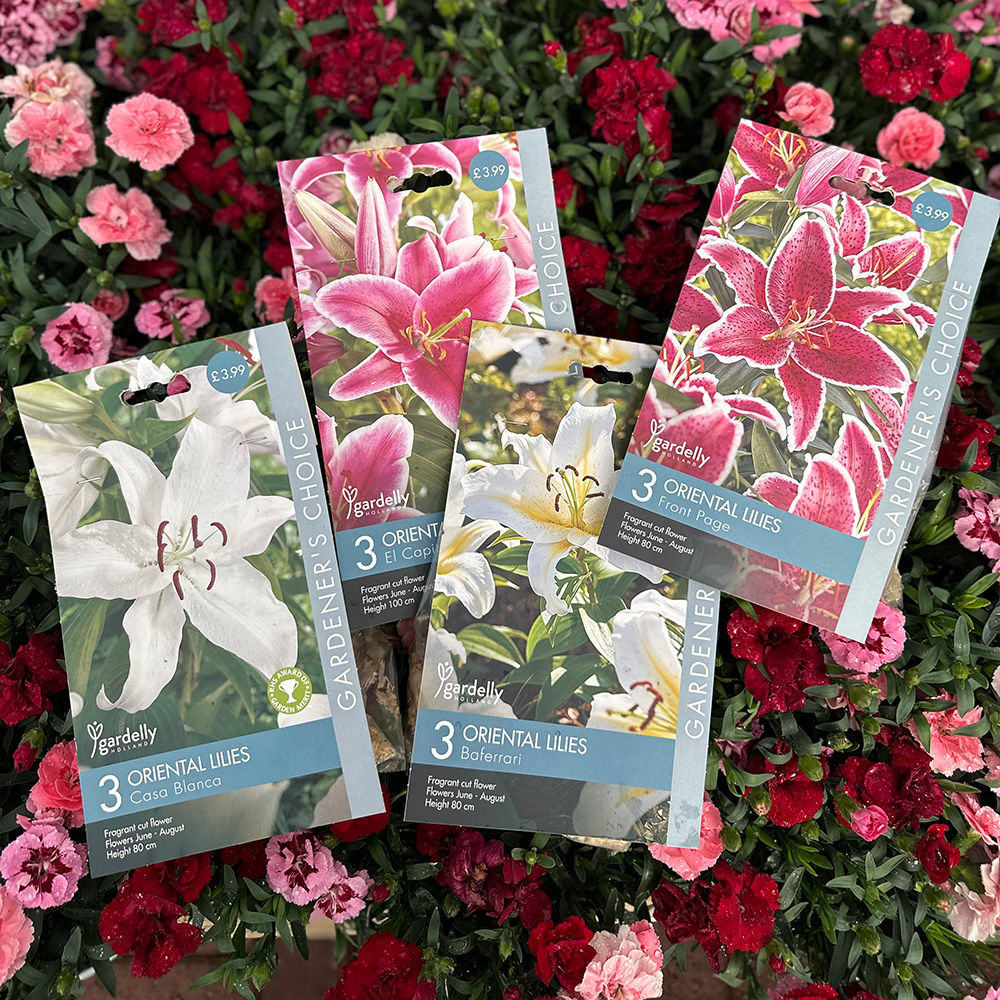
Caring for Lilies
Deadheading a lily is not recommended, as they will only produce one flower head each season. You can still remove spent flowers however to stop seed production. They will need watering consistently throughout hot periods, though try not to over-water as this can stunt their growth.
These are rather hardy plants and so when winter rolls around you won’t have to do much to protect them. Most varieties can survive harsh winters themselves, though a little help will still go a long way.
Lilies are prone to clumping, so every few years you should divide the roots to keep your summer border tidy. Simply raise clumps out of the soil and separate the tangled bulbs. The separated bulbs can be grown elsewhere or in pots/containers.
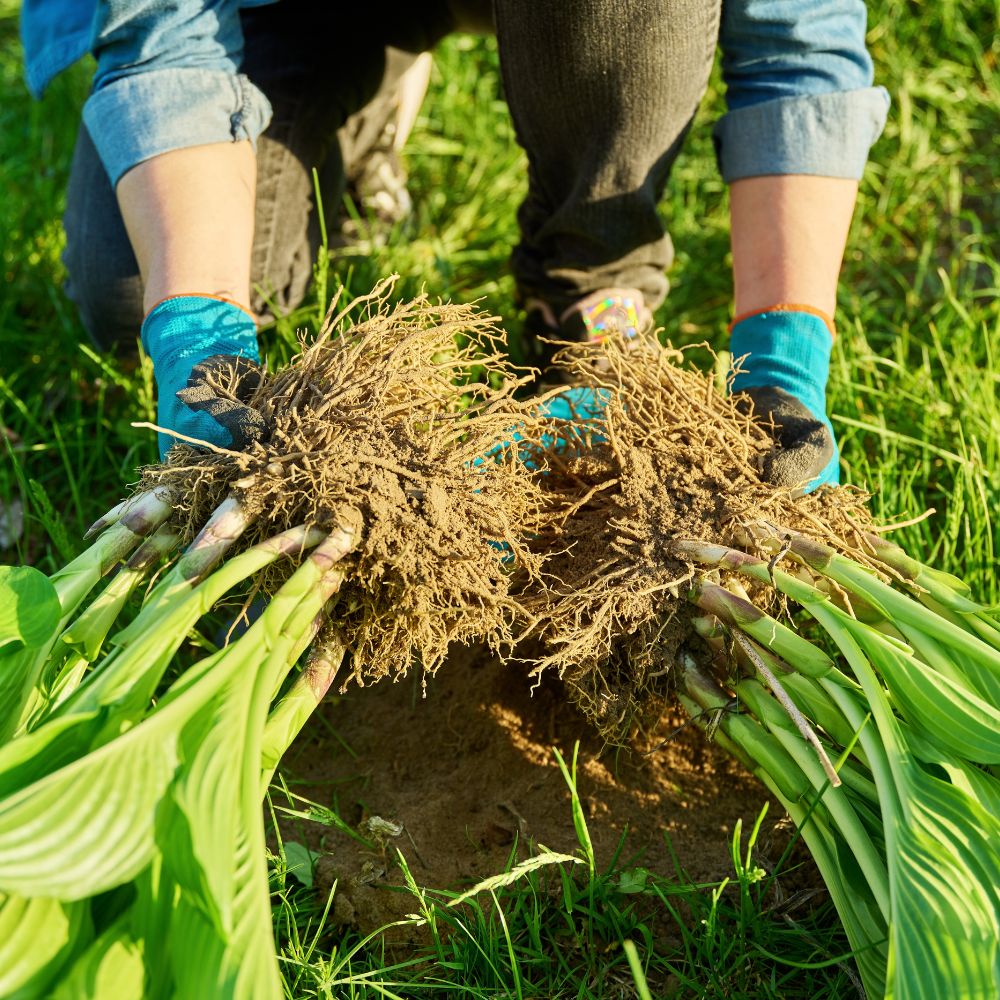
Begonias
Chosen as an easy to grow, versatile flower they can be grown in all sorts of places. Best known for being in potted and hanging displays they flower all summer long, right up until the first frost! They thrive best in dappled/partial shade as if in direct sunlight their foliage can burn and lose its colour. They will require well-draining soil before planting to prevent waterlogging.
You may encounter different types along your journey, here are some of the key varieties to look out for:
Tuberous Begonias – With an incredibly long flowering season, you may spot a few different flowers on one bush. Tuberous begonias flower with male and female on the same plant, and you may one flashier than the other. Often picked for hanging baskets, tuberous Begonias are typically planted as annuals, though can be salvaged if brought inside each winter.
Fibrous-rooted Begonias – These have the typical “ball” of thin roots and are usually dwarf bedding varieties. You may notice these bloom with smaller leaves and flowers, making them fantastic for containers. Primarily annuals, these are often removed at the end of season and replanted for next year.
Foliage Begonias – As their name suggests, these Begonias a grown for their show-stopping leaves in borders or even as houseplants! You should expect large leaves in a multitude of colours and patterns, from spotted pinks or purples to reds and silvers. They prefer dappled shade with a nice humidity, as direct sunlight can tarnish their colours by burning a few leaves.
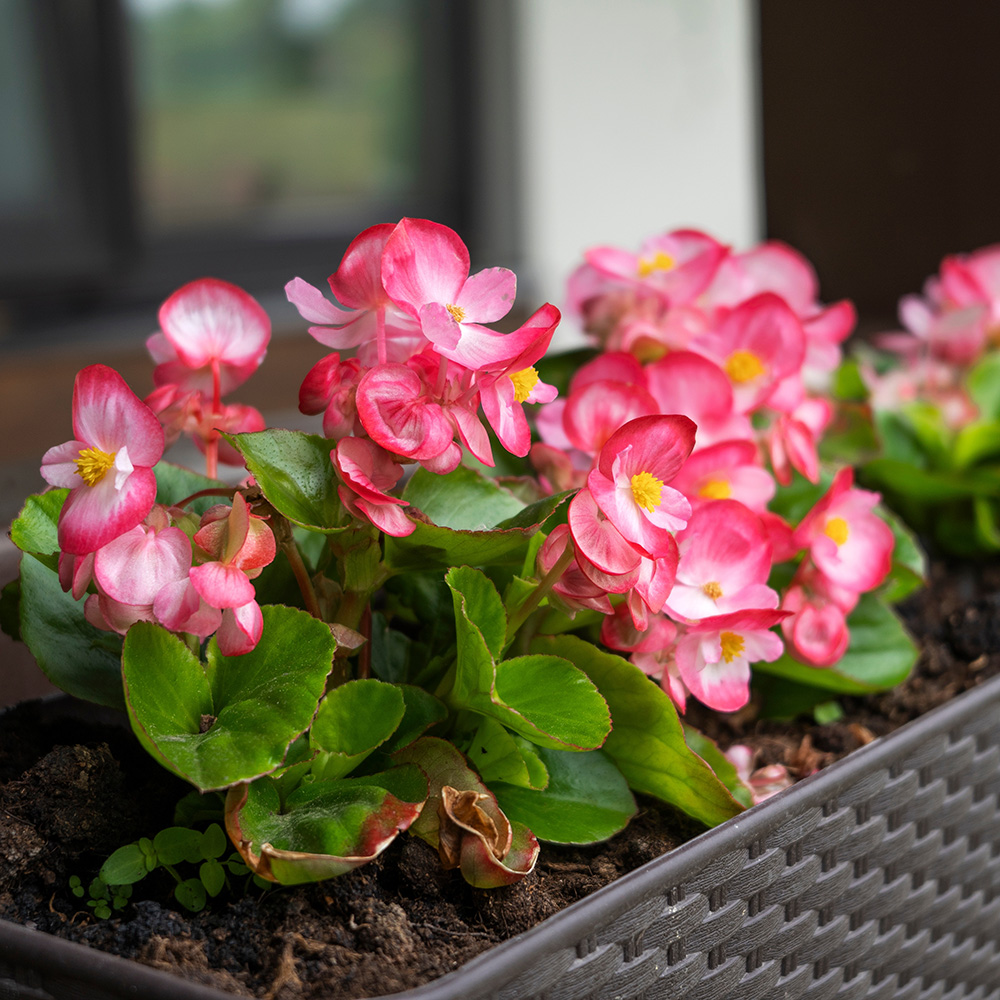
Caring for Begonias
The aftercare for Begonias is considered easy and doesn’t change much depending on what varieties you planted. Keep them well watered (especially potted varieties), and let the soil dry in between watering. Beware of overwatering your begonias as they commonly will rot if left in boggy conditions, so ensure your compost is well-drained. If you notice any drooping or dropped flowers, the soil is potentially too dry.
Foliage Begonias won’t need feeding as often, although for others its recommended to feed them every other week in summer for steady and strong growth. You may find your foliage Begonias sprouting tiny flowers, it is common practice to remove these as they can often be less interesting than the foliage itself.
When winter rolls around, after the first frost tuberous begonias will need to be lifted and stored indoors or in a frost-resistant shed (but don’t forget to still water them!). Typically, the less hardy varieties are treated as annuals, so don’t be discouraged if you can’t shield them from frosts.
Begonias are susceptible to powdery mildew; root rot and even fungal leaf spots so always keep a keen eye on your plants. Watch for slugs and snails, you may find little nibbles on various leaves appear overnight. Theres plenty of organic ways to deal with pests without harming the rest of your summer border. Find one that best suits you Online or at your local British Garden Centre.
